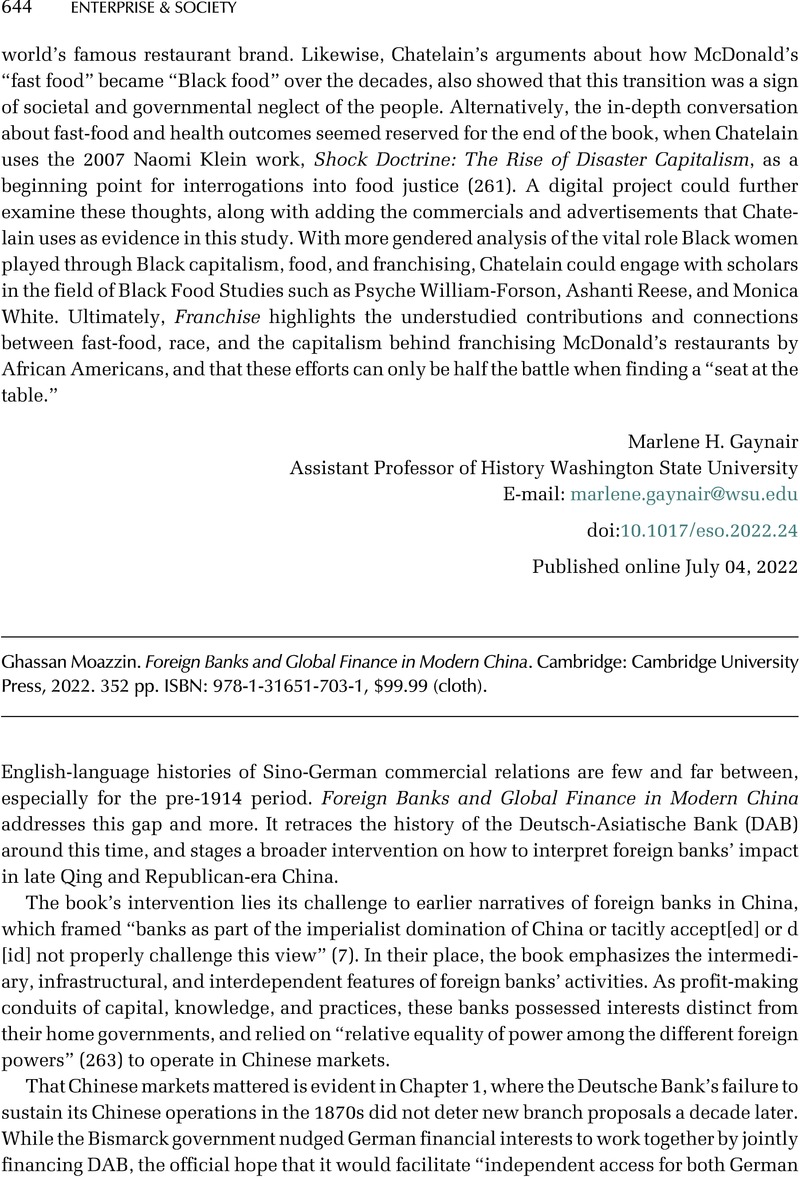No CrossRef data available.
Published online by Cambridge University Press: 04 May 2023

1. Köll, Elisabeth, Railroads and the Transformation of China (Cambridge, MA: Harvard University Press, 2019)CrossRefGoogle Scholar.
2. van de Ven, Hans, Breaking with the Past: The Maritime Customs Service and the Global Origins of Modernity in China (New York: Columbia University Press, 2014)Google Scholar.
3. Boecking, Felix, No Great Wall: Trade, Tariffs, and Nationalism in Republican China (Cambridge, MA: Harvard University Asia Center, 2017)Google Scholar.
4. Thai, Philip, China’s War on Smuggling: Law, Economic Life, and the Making of the Modern State, 1842–1965 (New York: Columbia University Press, 2021)Google Scholar.